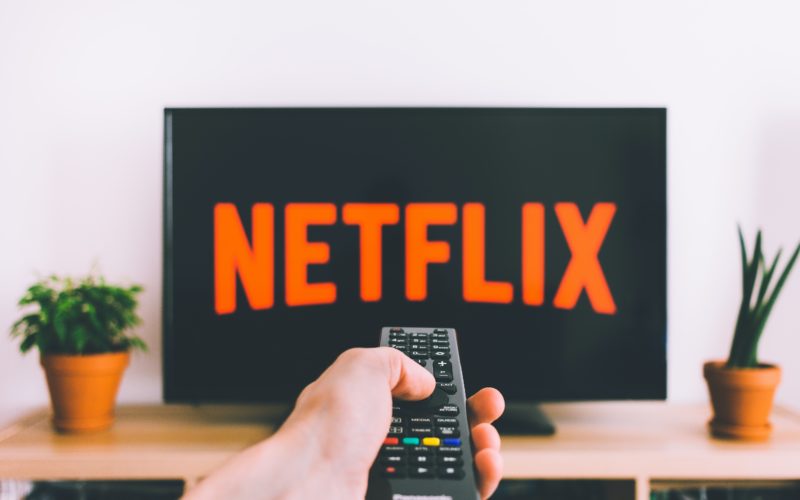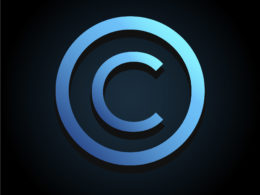With the rise of the internet, television sets no longer serve their original purpose. Instead of subscribing to cable TV, many American families use their TVs (or laptops) to stream their favorite TV shows and films. Indeed, the vast majority of successful shows and films are now streamed over the internet. According to recent research, it is common for Americans to subscribe to multiple streaming services.1[1]Dade Hayes, More Than Half of U.S. Households Now Subscribe to Multiple Streaming Services, DEADLINE.com (Aug. 28, 2020, 8:30 AM), https://deadline.com/2020/08/more-than-half-of-u-s-households-now-subscribe-to-multiple-streaming-services-study-1203025747/. In fact, a New York Times analysis found that Americans spend at least $170 per month on streaming services like Netflix, Hulu, and Apple TV Plus.2[2]Brian X. Chen, How Much Are We Paying for Our Subscription Services? A Lot, NYTIMES.com (Jan. 29, 2020), https://www.nytimes.com/2020/01/29/technology/personaltech/paying-subscription-services.html. While this may be a new “Golden Age” for the entertainment industry, it has been accompanied by significant negatives. Given the increasing popularity of streaming services, the price of a subscription for these services has increased steadily, leading to the creation of a vast array of pirating websites that offer this content for free or a small fee. These websites have fostered an environment of extreme levels of illegal streaming to the detriment of studios and production companies.
In 2019, the Department of Justice charged two men with illegally supplying to subscribers of their website over 128,000 shows and movies owned by popular companies like Netflix and Hulu. In 2015, far before illegal streaming hit its peak, Reed Hastings, the CEO of Netflix, wrote to shareholders that, of all the streaming platforms available, “piracy is one of [Netflix’s] biggest competitors.”3[4]Letter from Reed Hastings and David Wells to Netflix Shareholders (Jan. 20, 2015), https://s22.q4cdn.com/959853165/files/doc_financials/quarterly_reports/2014/q4/Q4_14_Letter_to_shareholders.pdf. Furthermore, according to a report by the Global Innovation Policy Center, which is part of the U.S. Chamber of Commerce, piracy cost American TV and film businesses $15.1 billion in 2017.4[5]David Blackburn, Jeffrey A. Eisenach, David Harrison Jr., Impacts of Digital Video Piracy on the U.S. Economy, Global Innovation Policy Center, https://www.theglobalipcenter.com/wp-content/uploads/2019/06/Digital-Video-Piracy.pdf. Streaming alone accounts for more than 80 percent of piracy.5[6]Id. Although the entertainment industry is taking action to combat piracy, including creating the Alliance for Creativity and Entertainment6[7]Alliance for Creativity and Entertainment, https://www.alliance4creativity.com (last accessed Mar. 22, 2021). , the impact has been limited due to a lack of federal laws focused specifically on streaming. This changed with the enactment of the Protecting Lawful Streaming Act of 2020 (the “PLSA”), which was signed into law as part of the January 2021 omnibus spending bill.7[8]18 U.S.C. § 2319C The PLSA received broad bipartisan Congressional support, signaling the need for action.8[9]Supporters included Senators John Cornyn (R-TX), Marsha Blackburn (R-TN), Patrick Leahy (D-VT), Chris Coons (D-DE), and others. See Press Release, Thom Tillis, Bipartisan Legislation Led by Tillis and Leahy to Fight Illegal Streaming by Criminal Organizations to be Signed Into Law (Dec. 21, 2020).
Notably, rather than amending title 17 of the United States Code which codifies Copyright law, the PLSA amends title 18, which focuses on crimes and criminal procedure.9[10]18 U.S.C. § 1-6005. The PLSA makes illegal streaming a felony.10[11]Id. However, the PLSA’s reach is limited to those individuals who are facilitating illegal streaming for commercial gain.11[12]Id. at § 2319C(b). The owners of a website that hosts pirated shows or films would be liable under the PLSA, but those who simply utilize the website to watch shows or films would not. Also, the violator must have acted willfully12[13]Id., and the work must be one that is intended for public consumption and have no alternate commercial purpose.13[14]Id. at § 2319C(b)(1)-(3).
Violators are subject to differing levels of penalties depending on the offense. First, for general piracy infringements, the violator can be fined, imprisoned for up to three years, or both.14[15]Id. § 2319C( c)(1). Second, for offenses where the infringed upon work was “being prepared for commercial public performance, [and the] person knew or should have known that the work was being prepared” for this purpose, the infringer can be fined, imprisoned for up to five years, or both.15[16]Id. § 2319C ( c )(2)(a)-(b). In this context, “commercial public performance” means the release of a film, show, artistic performance, or the like that has not yet been released for public consumption but is scheduled or intended for release.16[17]Id. § 2319C(a)(4)(A)(i)-(ii). Any time before release, it is assumed to be off-limits to public consumption, subject to the discretion of the copyright owner.17[18]Id. Finally, the PLSA punishes repeat offenders with a fee, no more than 10 years in prison, or both.18[19]Id. § 2319C( c )(3). In each tier, the amount of the fine is seemingly at the discretion of the court, as the statute does not explicitly state a minimum or maximum requirement.
The passing of the PLSA signals that streaming has solidified its rank as one of the most popular ways to consume entertainment. It has also proven that illegal streaming continues to be a problem for streaming services and is difficult to combat. As more feature films and popular TV shows are exclusively released on these platforms, the risk of piracy will continue to linger. With Congress passing the PLSA, streaming services hope that a decline in illegal streaming may be imminent, ensuring that they can continue to produce original shows and films without worrying that piracy may affect their bottom line. While it is a successful first step, piracy is not a problem that will disappear with this one Act, and companies will likely continue to advocate for legislation that targets illegal streamers.
Written by: Talia Balakirsky
Talia is a 2023 J.D. Candidate at Brooklyn Law School
1 Dade Hayes, More Than Half of U.S. Households Now Subscribe to Multiple Streaming Services, DEADLINE.com (Aug. 28, 2020, 8:30 AM), https://deadline.com/2020/08/more-than-half-of-u-s-households-now-subscribe-to-multiple-streaming-services-study-1203025747/.
2 Brian X. Chen, How Much Are We Paying for Our Subscription Services? A Lot, NYTIMES.com (Jan. 29, 2020), https://www.nytimes.com/2020/01/29/technology/personaltech/paying-subscription-services.html.
3 Press Release, U.S. Dep’t of Justice, Two Computer Programmers Plead Guilty in Connection with Operating Two of the Biggest Illegal Movie and Television Show Streaming Services in the United States (Dec. 13, 2019).
4 Letter from Reed Hastings and David Wells to Netflix Shareholders (Jan. 20, 2015), https://s22.q4cdn.com/959853165/files/doc_financials/quarterly_reports/2014/q4/Q4_14_Letter_to_shareholders.pdf.
5 David Blackburn, Jeffrey A. Eisenach, David Harrison Jr., Impacts of Digital Video Piracy on the U.S. Economy, Global Innovation Policy Center, https://www.theglobalipcenter.com/wp-content/uploads/2019/06/Digital-Video-Piracy.pdf.
6 Id.
7 Alliance for Creativity and Entertainment, https://www.alliance4creativity.com (last accessed Mar. 22, 2021).
8 18 U.S.C. § 2319C
9 Supporters included Senators John Cornyn (R-TX), Marsha Blackburn (R-TN), Patrick Leahy (D-VT), Chris Coons (D-DE), and others. See Press Release, Thom Tillis, Bipartisan Legislation Led by Tillis and Leahy to Fight Illegal Streaming by Criminal Organizations to be Signed Into Law (Dec. 21, 2020).
10 18 U.S.C.A. §§ 1-6005
11 Id.
12 Id. § 2319C(b).
13 Id.
14 Id. § 2319C(b)(1)-(3).
15 Id. § 2319C( c )(1).
16 Id. § 2319C( c )(2)(a)-(b).
17 Id. § 2319C(a)(4)(A)(i)-(ii).
18 Id.
19 Id. § 2319C( c )(3).




